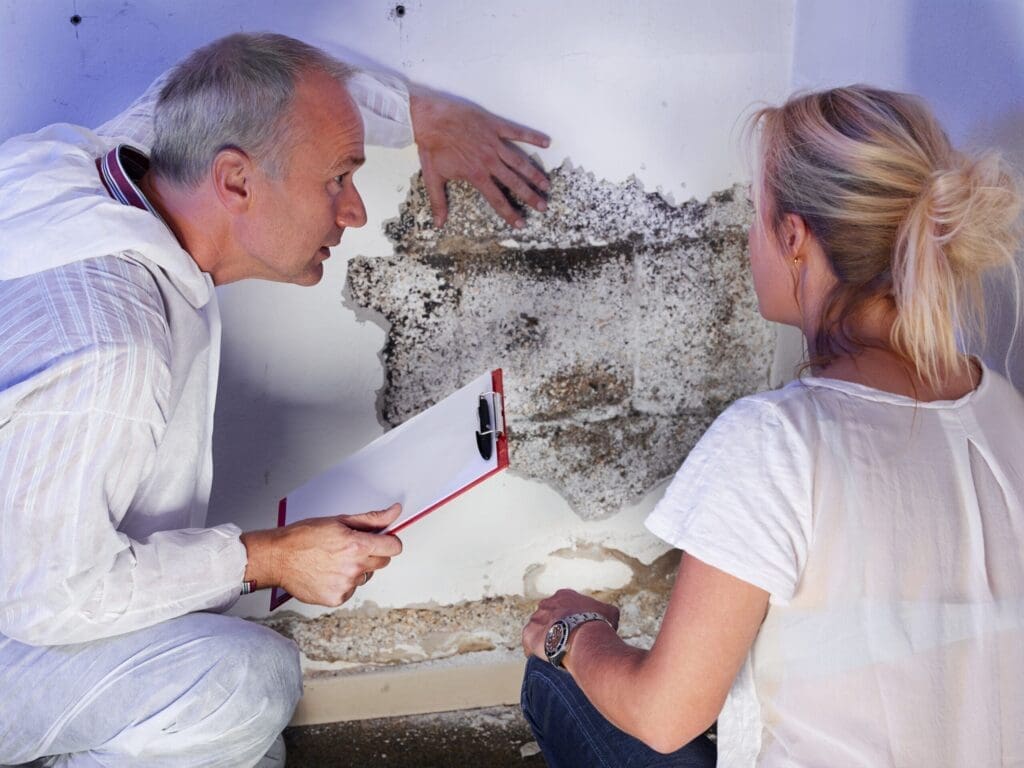A Comprehensive Guide to Detecting and Preventing Mold in Your Home
Mold is like a quiet visitor that can make spots on walls and smell a bit funny. Now, you might wonder, how do you find this sneaky mold? Well, we use something called mold inspection and testing. It's like when you play detective to discover where mold might be hiding. First, you look for clues like water stains or damp spots.
If you find them, that's a hint that mold might be nearby. Also, think about how your house breathes—that's the air inside. If it feels too sticky, mold might like it too! Don't forget to check secret spots like behind walls or under the floor. Sometimes, mold hides in these tricky places. Remember, it's essential to play detective and inspect your house to keep it happy and healthy!
Signs Of Mold
Sometimes, you can see mold in your house. Look for funny spots on walls or ceilings. They might be black, green, or other colors. Mold can make places look bad, like there's a stain. It can be in the bathroom or other rooms. Also, it sometimes smells weird, like an old basement. If you notice this smell, you might want to check for mold.
Mold isn't always easy to see or smell. It can hide in secret spots, like behind walls or under floors. That's why mold inspection and testing can help. Professionals can use special tools to find mold, even if you can't see it. They might use a tiny camera or other cool gadgets. So, if you're unsure, it's okay to ask for help to make sure your home stays nice and healthy.
Related: What Are Common Signs Of Mold on Walls?
Visible Indicators
If you see strange spots on walls or ceilings that look different colors, like black or green, that might be mold. Mold is like a tiny plant that can grow in damp places. Sometimes, walls or ceilings can have marks or stains, and that might be a sign of mold too. It's not always easy to see, so you might need to use your nose too. If there's a smell that's a bit like dirt or old books, it could be mold hiding somewhere. Mold can be tricky, so if you find it, it's important to tell someone.
If you ever had water leaks or spots that looked wet, that's like a big welcome sign for mold. Mold likes to grow where it's wet. You can also check the air with a special tool called a hygrometer. If it says it's too humid (like a rainforest inside your home), that's bad for stopping mold. Sometimes, if you want to be sure, people use kits to do mold inspection and testing. These kits can help you find where mold might be hiding, especially in places you can't see. If you think mold might be around, it's a good idea to ask someone older for help or call a mold inspector. They can figure out if there's mold and how to make it go away.
Related: How To Test Black Mold And How To Get Rid Of It?
Musty Odors
Sometimes, our houses can have a funny smell, like something old or earthy. When you notice this kind of smell, it might mean there's something called mold hiding around. Mold is a tiny living thing that loves wet places. It can live on walls, ceilings, or even under the floor. When you sniff a musty odor, it's like mold is trying to tell you it's there.
If you ever smell something musty, it's a good idea to check around your home. Look for any wet spots or water stains on walls or ceilings. Also, think about using a mold inspection and testing kit to see if there's mold hiding where you can't see it. These kits can help you understand if you need to clean up the mold to keep your home healthy and smelling fresh. Remember, it's like a little detective work to make sure your house stays nice and safe!
Related: How Accurate Air Mold Tests Are?
Investigating Water Damage
Start by checking walls, ceilings, and floors for strange spots or colors. Mold loves damp places, so if you find water stains or spots, that's like a clue that mold might be nearby. Use your eyes and nose—sometimes mold has a funny smell, like a mix of old socks and dirt. You can also be a humidity detective by checking how much water is in the air.
Get a tool called a hygrometer (it's like a humidity detective gadget) to measure the air's wetness. If it's too wet, mold might think it's a good place to party. And don't forget to check hidden spots like closets or under beds—mold likes secret hideouts. If you ever find mold, it's a good idea to call in a mold inspector. They're professionals who know where to look and can help keep your home safe and mold-free.

Leaks and Dampness
If you see wet spots on walls or ceilings, it might mean there's water sneaking in where it shouldn't. Water stains are like clues that tell us about leaks and dampness. When water stays where it shouldn't, it can invite mold to come and visit. Mold is like a fuzzy, bad guest that likes damp places. If you notice any water stains, it's a good idea to check them out to make sure mold isn't thinking about moving in. And if you find mold, you might want to ask a mold inspector to take a look and help you say goodbye to it.
Related: How To Get Rid Of Mold In House?
HVAC System Inspection
Your house has a special helper called the HVAC system. It makes sure your home is cozy and warm in the winter and cool in the summer. But sometimes, the HVAC system can have mold problems. Mold is like damp places, and if there's too much moisture in the air, it can grow in the HVAC system. This can make the air bad to breathe. So, it's important to check the HVAC system for mold. You can ask a grown-up to look at it or even hire someone for a mold inspection. They will make sure the HVAC system is clean and doesn't have any mold hiding inside. Keeping the HVAC system clean helps your house stay comfy and healthy!
Checking Hidden Areas
Sometimes, mold likes to hide where our eyes can't easily see. It can sneak behind walls or under floors like a little quiet guest. To find it, you might need to peek into secret places. Look for damp spots or places where water has left a stain. Mold likes to grow in these wet spots. If you sniff something strange, like a musty smell, it could be a clue that mold is hiding nearby. If you want to be like a mold detective, you can use mold testing kits. These kits help you figure out if mold is playing hide-and-seek in your home. You can check the air or surfaces for tiny molds.
DIY Mold Test Kits
Did you know there are special kits you can use to check if mold is hiding in your home? They're called DIY Mold Test Kits! These kits are like detectives for your house. You can find them in stores. With these kits, you can take samples from the air or surfaces. It's a bit like being a mold detective. Just follow the instructions in the kit, and you might discover if there's mold around.
Remember, these kits are good for a first look, but if you find a lot of mold or feel unsure, it's smart to ask a grownup for help. They might bring in someone who knows even more about mold testing. Mold can sometimes be tricky, but these kits are a good start to keeping your home safe and healthy!
The Importance of Professional Inspection
When we talk about checking for mold in your house, sometimes it's like being a detective. You need to look for clues like spots on walls or a funny smell, almost like when your gym clothes stay wet for too long. But there are tricky spots where mold hides, and you might need a professional mold inspector. These pros have special tools to find mold even in secret places like behind walls. If the mold stays in your home for too long, it can cause problems for you and your house. A professional mold inspector is a helper who knows where to look and how to keep your home healthy. If they find a lot of mold, they might recommend professional mold removal to get rid of it safely.
Essential Steps for Mold Prevention and Home Health
It's super important to keep an eye out for mold in your home. If you see strange spots on walls or notice a weird smell, it might be mold saying hello. Don't forget to check for water stains and fix any leaks, because mold loves damp places. Remember to use a little tool called a hygrometer to check how wet the air is—mold doesn't like dry air. And don't worry if you need help; you can find experts for mold inspections near Indiana. Taking small steps to stop mold early can help keep your home and you feeling happy and healthy!


